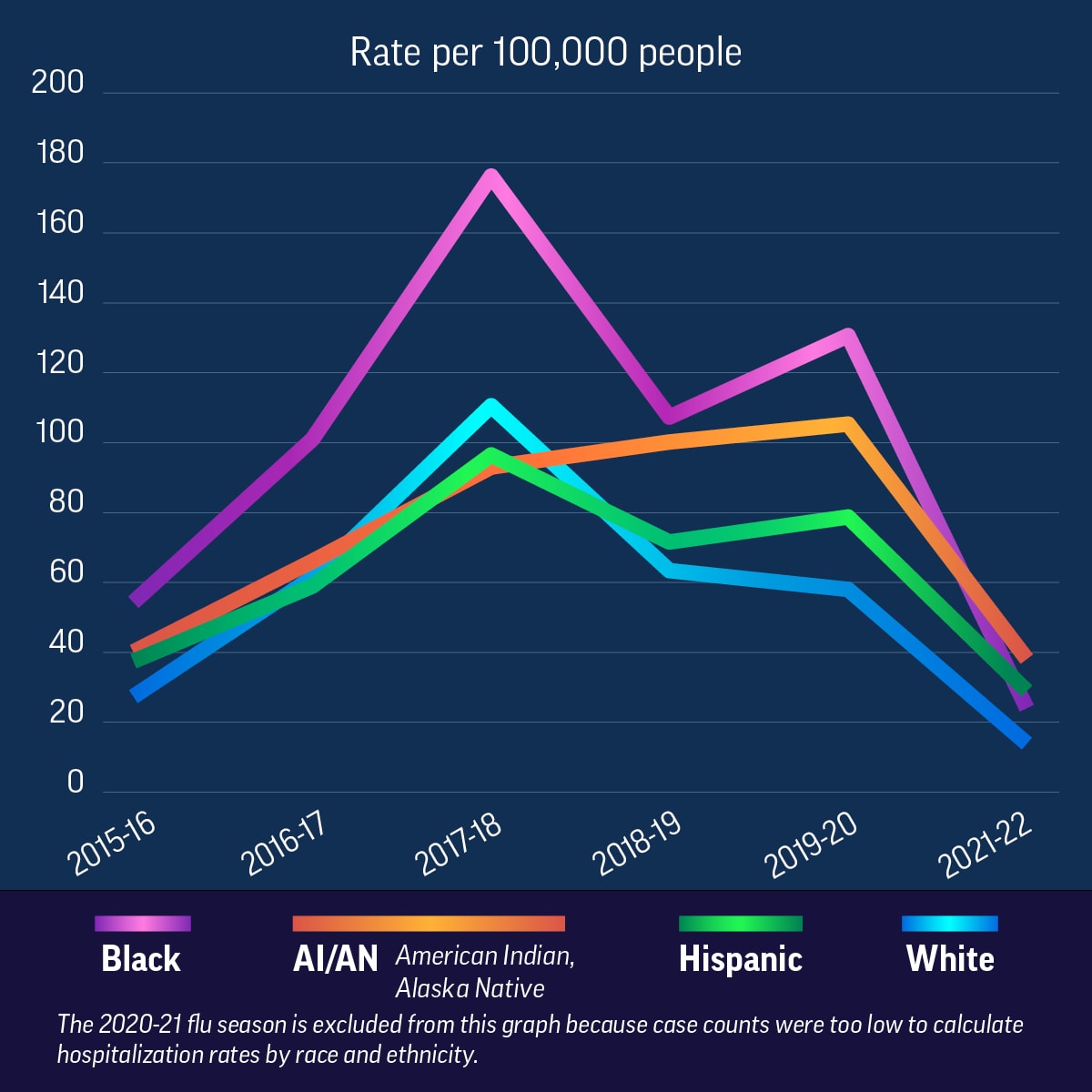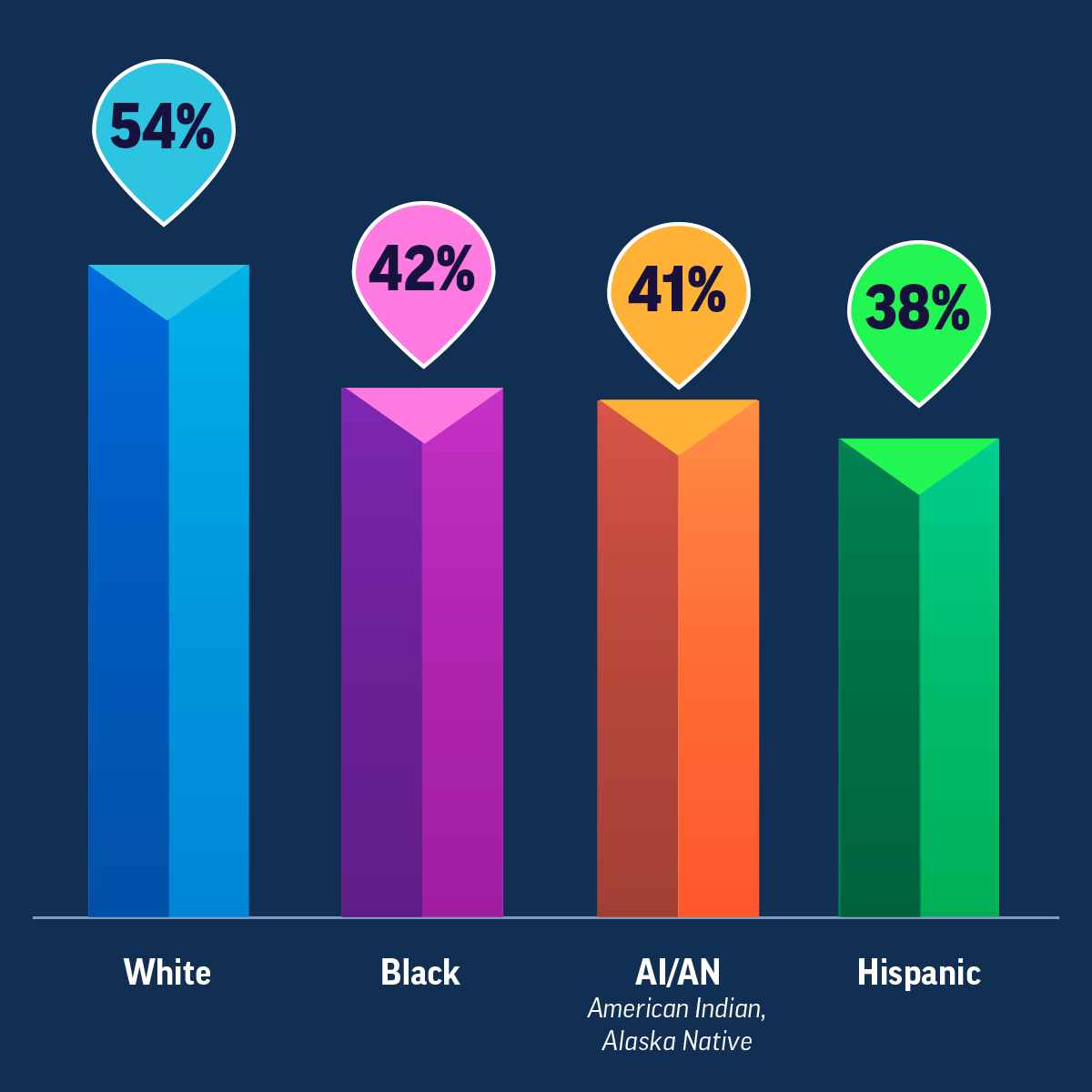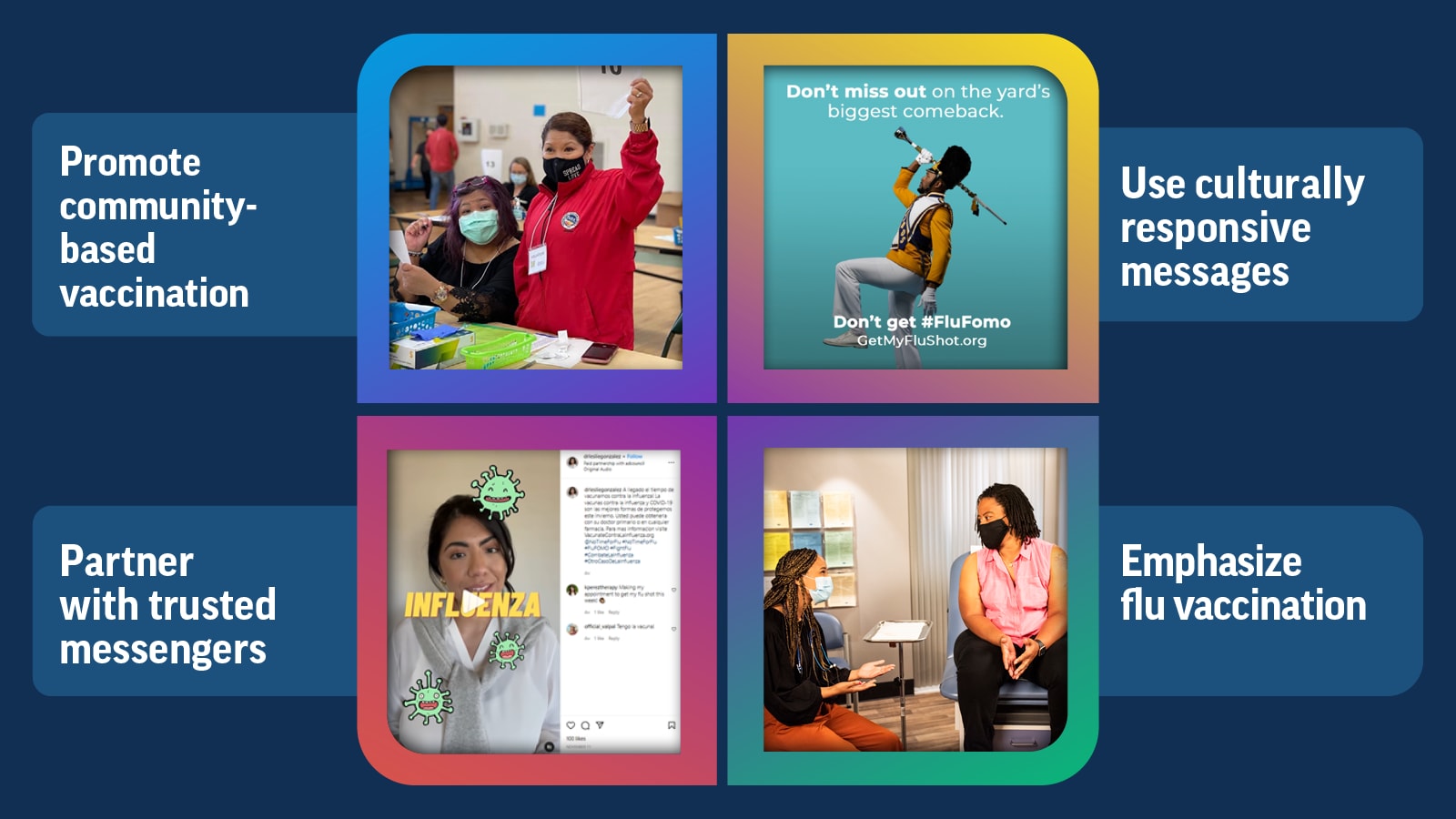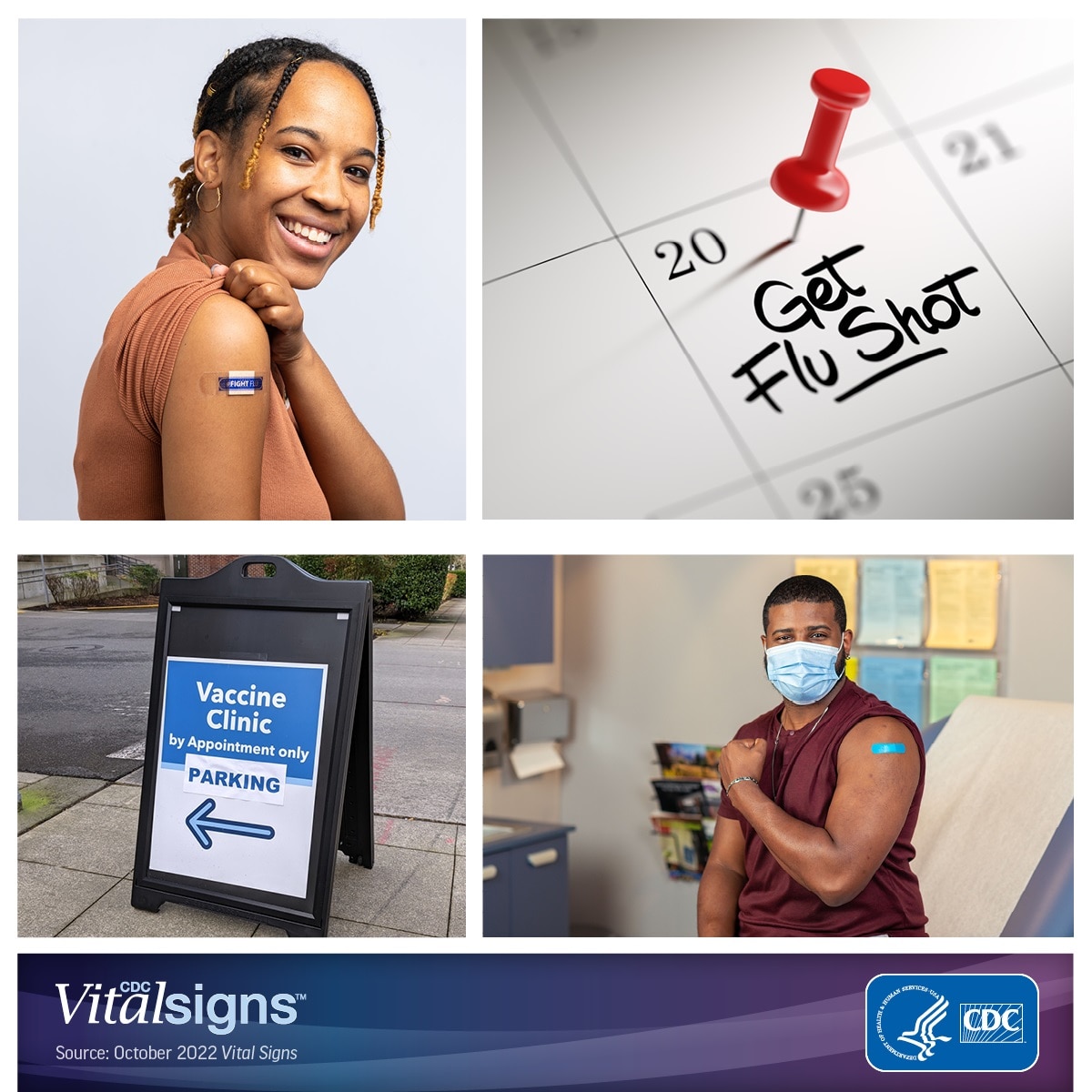Challenges
Access: People from some racial and ethnic minority groups face barriers to health care in general and, specifically, lack easy access to vaccination. Last flu season, adults with insurance, a healthcare provider, and a medical checkup in the past year were more likely to get a flu vaccine compared with those without. Hispanic adults were less likely to have insurance. Hispanic and AI/AN adults, as well as adults of other races, were less likely to have a healthcare provider and a checkup in the past year. These data suggest lack of healthcare access is contributing to flu vaccination disparities. Further, lack of access to culturally competent providers remains a barrier to vaccination for many people from racial and ethnic minority groups.
Missed opportunities to vaccinate: Among adults who reported a recent medical checkup, vaccination coverage was lower among Black, Hispanic, AI/AN, and other/multiple race adults than among White adults. This suggests that healthcare providers are missing opportunities to vaccinate people from some groups during routine medical appointments.
Mistrust and misinformation: Misperceptions about how severe flu can be and misinformation about vaccine safety have hurt flu vaccination uptake for years. Systemic racism and historical events have added to a lack of confidence in flu vaccination.
People from Some Racial and Ethnic Minority Groups Are at Higher Risk of Flu Hospitalization
Black, Hispanic, and AI/AN adults were hospitalized with flu at higher rates than White adults during most seasons from 2015 to 2022.
Inequities in Flu Vaccination Coverage Continue
Hispanic, AI/AN, and Black adults received a flu vaccine at lower rates compared to White adults during the 2021–2022 flu season.
Multiple Actions Work Best to Improve Access and Vaccine Confidence
Using proven measures may help increase flu vaccination among people from racial and ethnic minority communities.
Get email updates about Vital Signs
VITAL SIGNS RESOURCES







